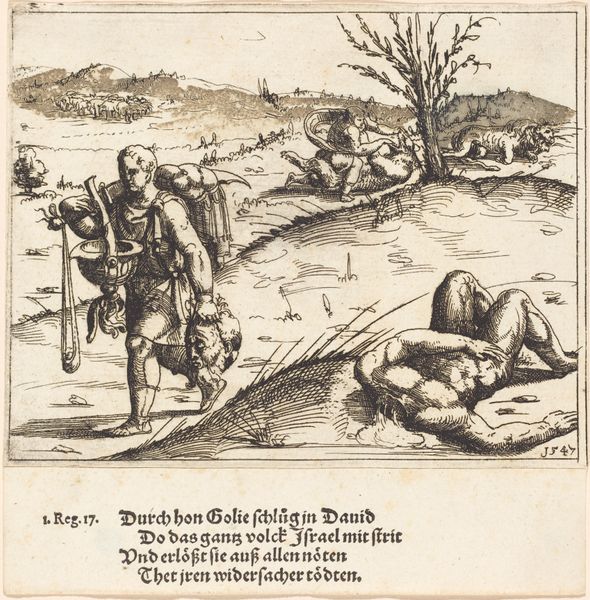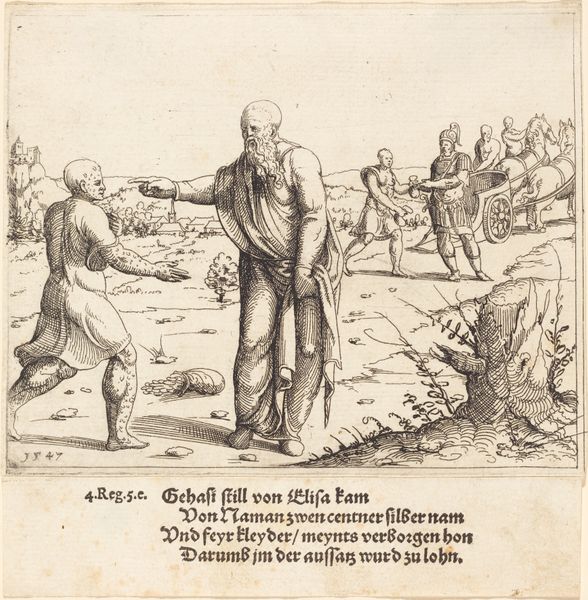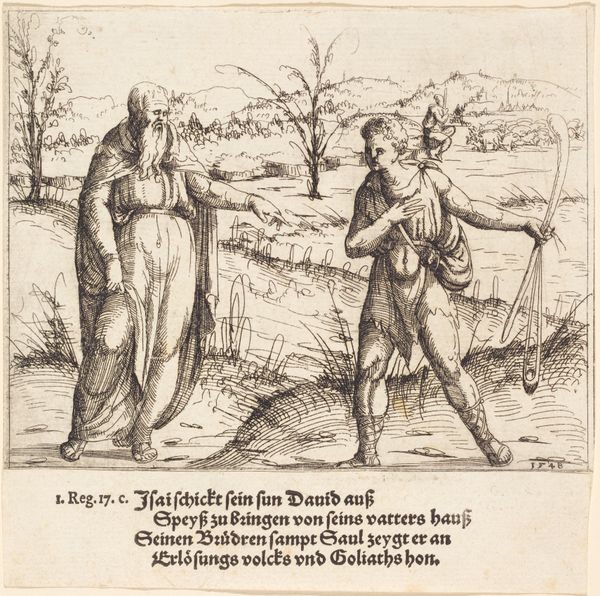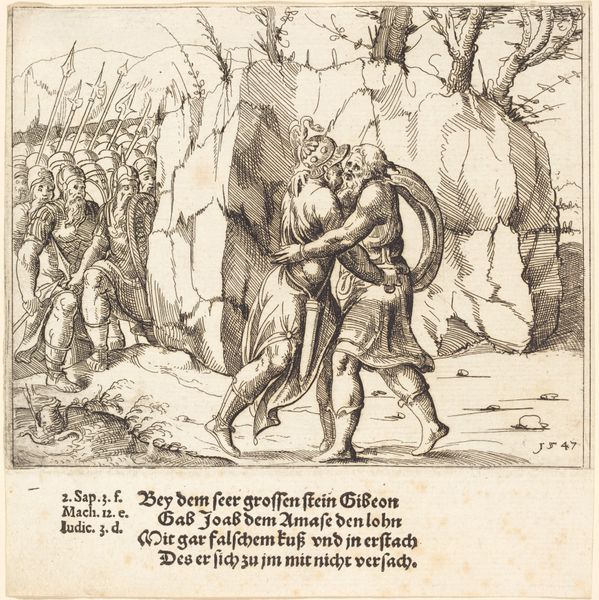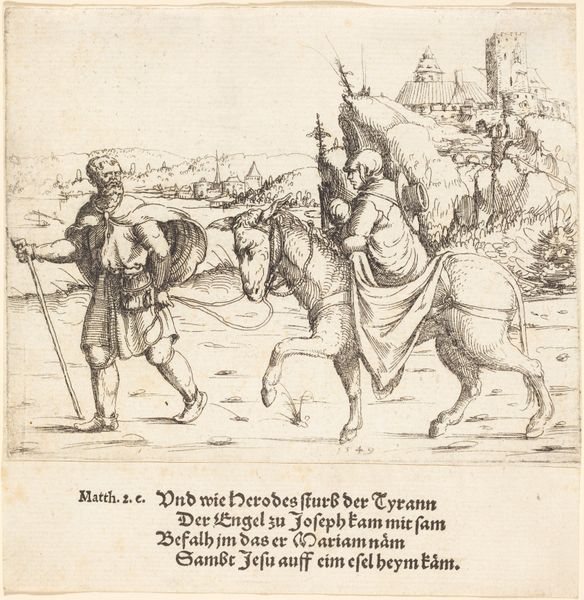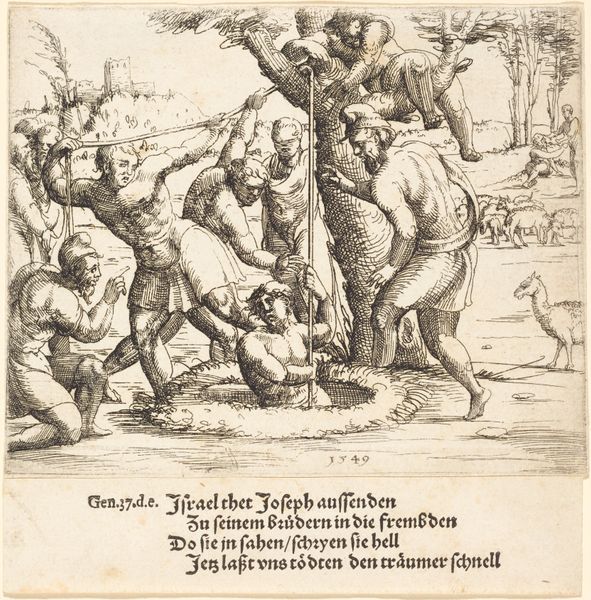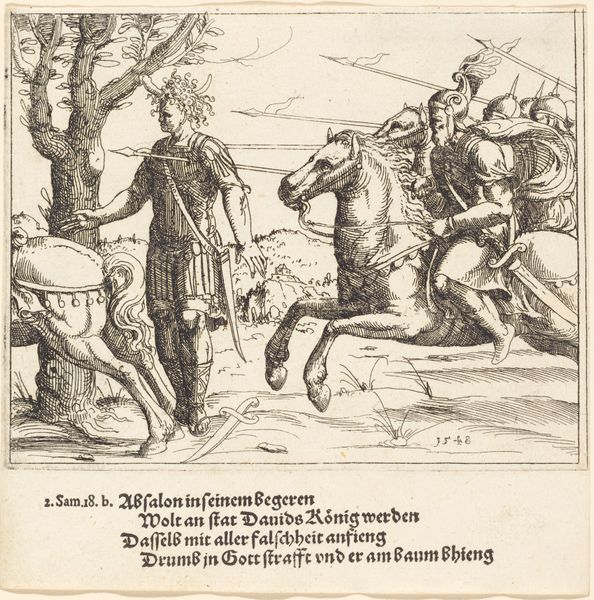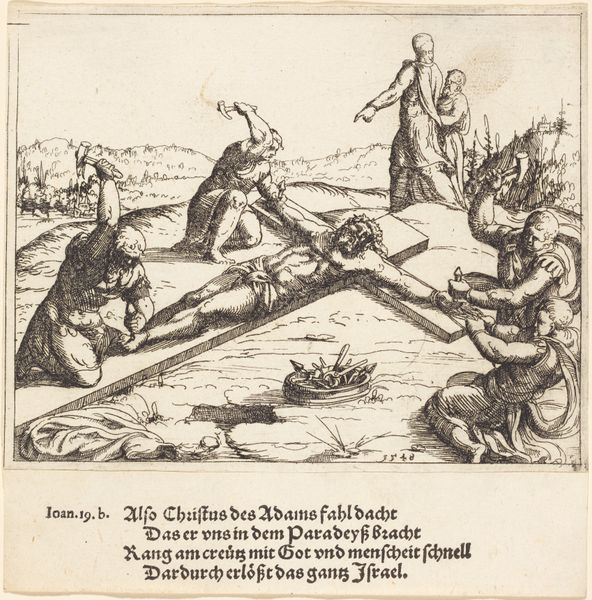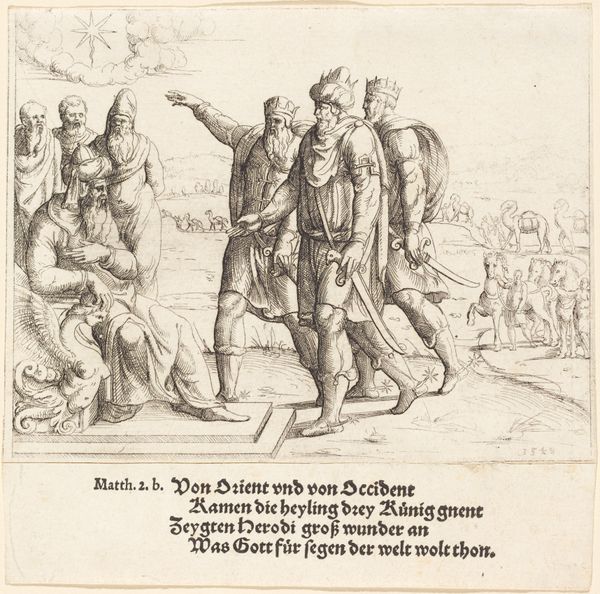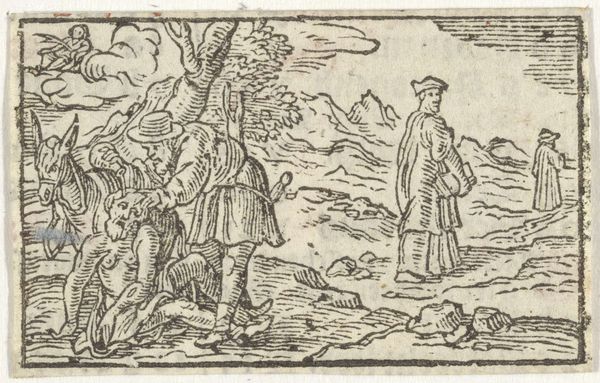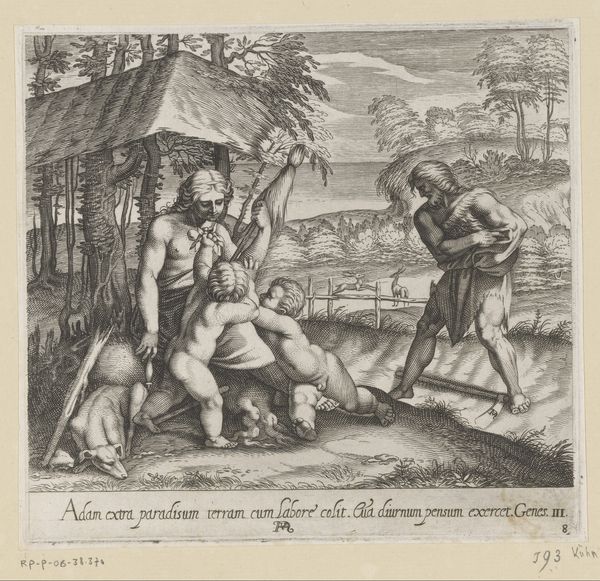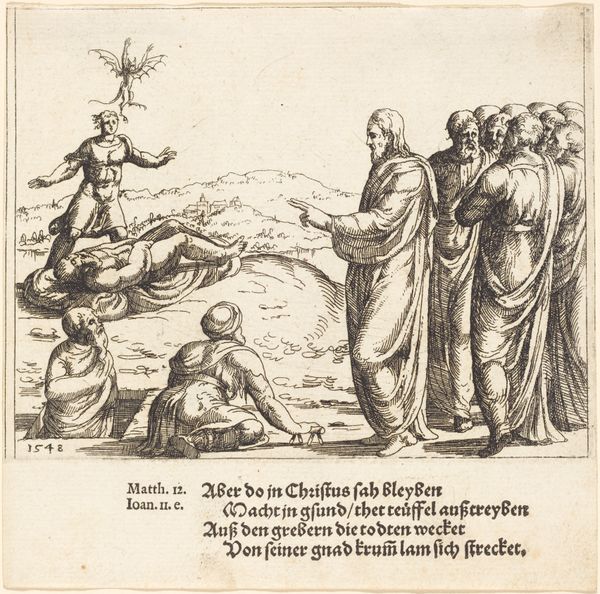
print, engraving
#
narrative-art
# print
#
figuration
#
history-painting
#
northern-renaissance
#
engraving
Copyright: National Gallery of Art: CC0 1.0
Augustin Hirschvogel created "The Punishment of Ananias and Sapphira" using etching, a printmaking technique. Acid is used to cut into a metal plate, in this case iron, creating fine lines which hold ink to transfer the design onto paper. Hirschvogel's skill is evident in the detailed linework that models the figures and landscape. The medium of printmaking was essential in disseminating images and ideas during the Reformation, allowing for widespread distribution of biblical scenes and moral lessons. In this context, consider the social implications of printmaking. It democratized art, making it accessible to a broader audience beyond the wealthy elite. The labor-intensive process of etching, from preparing the plate to printing the final image, reflects the skilled craftsmanship valued during the period. By emphasizing the materials and techniques of production, we can appreciate the cultural significance of this print and its role in shaping visual culture.
Comments
No comments
Be the first to comment and join the conversation on the ultimate creative platform.
